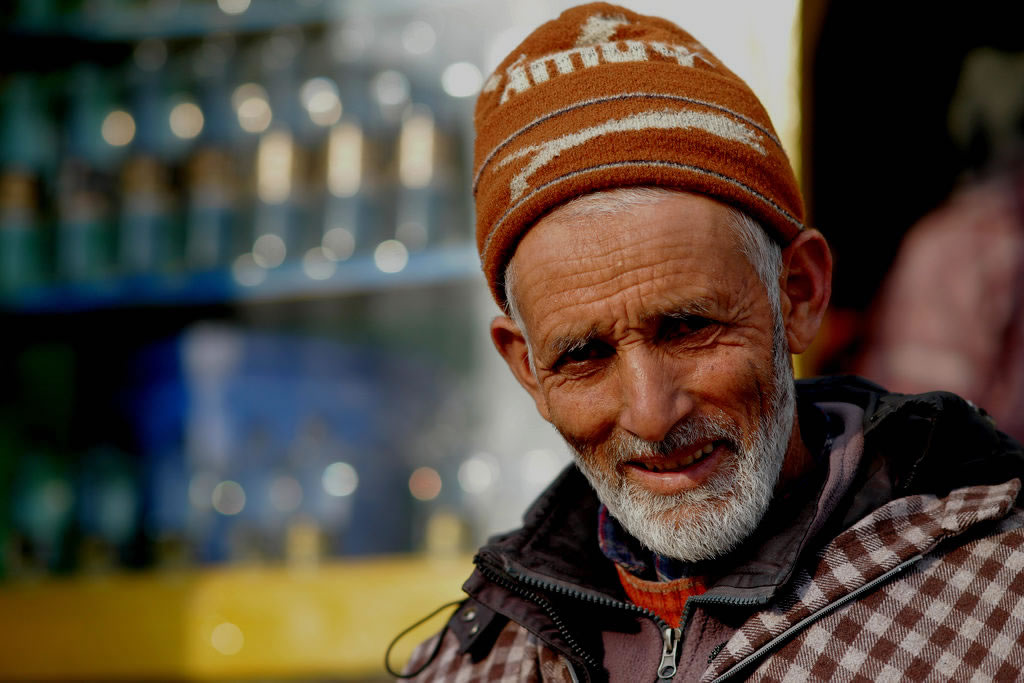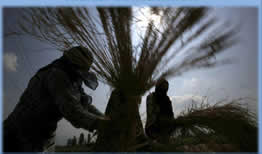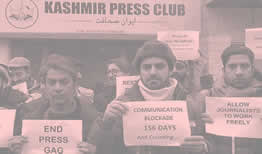The Impact of Kashmir's Turmoil on the Educational Sector:
The Impact of Kashmir's Turmoil on the Educational Sector:
Introduction:
The Kashmir issue is a territorial dispute
between India and Pakistan, with roots dating back to the Partition of British
India in 1947. At the time of Partition, the state of Jammu and Kashmir had
chosen to join either the new state of India or Pakistan or remain independent.
However, the ruler of the state of Kashmir, Hari Singh, faced internal and
external opposition, which led to India's military support. This also led to
the first India-Pakistan war in 1947–1948. Since then, the territory has been
divided between the two countries. India controls most of the state of Jammu
and Kashmir. Both countries still claim the entire region as their own, and
various wars and negotiations have yet to resolve the issue. This affects the
daily lives of millions of people in Kashmir.
Author: Ifra Bibi
The region has experienced years of conflict,
armed conflict, insurgencies, and restrictions on civil liberties. Many
businesses are affected by this ongoing crisis; Education is widely recognized
as basic a human right and plays a vital
role in the development of individuals and societies. However, in conflict
zones like Kashmir, access to quality education is severely curtailed, leaving
millions of children without the tools they need to build a better future.
Growth is important, but in a conflict zone like Kashmir, its importance will
re-emerge. In these areas, education provides a sense of normality and hope in
times of crisis and uncertainty. It provides a safe environment for students to
learn, grow and develop life skills, enabling them to see a future beyond the
chaos and conflict around them.
Education also plays a key role in
strengthening relationships, promoting peace and combating the negative
emotions that often prevail in conflict zones. It is seen as a tool for
empowerment. Many families see education as a way for their children to escape
the cycle of poverty and conflict, giving them the opportunity to achieve
success in the region and beyond.
These difficulties have been made worse by the 2019 repeal of Articles 370 and 35A, which eliminated the region's distinct status and resulted in its direct absorption with India. The events that followed included prolonged school closures, communication barriers, and increased security concerns, all of which have made it more challenging for children in Kashmir to continue their education. However, due to the ongoing conflict, schools often remain closed for long periods, there are insufficient teachers, classes are often disrupted and there are disparities in the extent of students’ learning.
As a result, many children in Kashmir are missing out on
the education they need to succeed. Subsequent events include prolonged school
closures, communication blockades and security concerns, all of which have made
it difficult for Kashmiri children to attend school. Literacy in Kashmir,
particularly gender gaps in literacy, is a major concern. The study will also analyze
the direct and indirect impacts of the ongoing conflict and the abrogation of
Articles 370 and 35A on education in Kashmir. The study will identify the
unique challenges faced by Kashmiri students in accessing education in the
post-abrogation period.
The Educational Crisis in Kashmir: A
Consequence of Conflict and Policy Shifts
The education sector in Kashmir has long been
a casualty of the region’s ongoing conflict. Despite promises of progress and
opportunity following the abrogation of Articles 370 and 35A, the reality has
been a worsening crisis that severely impacts students, teachers, and the
broader education infrastructure. The interplay between persistent violence,
restrictive policies, and inadequate governmental interventions has exacerbated
the challenges faced by Kashmiris in accessing quality education.
One of the most visible consequences of the
conflict is the destruction and displacement of educational facilities. Schools
have been bombarded or converted into makeshift shelters, leaving students
without safe spaces for learning. Many institutions have been forced to
relocate due to safety concerns, disrupting students' educational continuity.
The lack of infrastructure affects not only physical attendance but also the
broader quality of education, as makeshift classrooms often lack essential
resources.
A shortage of qualified and trained teachers
further compounds this issue. Many educators have been displaced or have left the
region due to safety concerns, leading to a significant decline in the
availability of experienced teaching staff. The violence has also disrupted the
livelihoods of over 65,000 teachers and non-teaching staff, who rely on the
education sector for their income.[1]
Additionally, policies such as the ban on schools run by the Falahi Aam Trust
(FAT) have resulted in the loss of over 10,000 teaching jobs, creating an
alarming vacuum in the region's educational framework.
The psychological impact of the conflict on
students cannot be understated. Many children in Kashmir exhibit symptoms of
post-traumatic stress disorder (PTSD), depression, and behavioral issues, which
impede their ability to focus and succeed academically. Studies reveal that
95.4% of children experience emotional distress, 60.3% report physical pain,
and 91.2% observe mental health issues in others around them.[2]
These numbers underscore the profound toll the conflict takes on the mental
well-being of the youth, often leaving them ill-equipped to navigate academic
challenges.
Tragically, the loss of life and physical
injuries among students and their families due to violence have led to
alarmingly low school completion rates. Students are frequently killed or
injured, with approximately 75% of families reporting incidents where a member
has been shot or hit by bullets. These experiences profoundly affect their
ability to pursue education. The trauma of seeing relatives, friends, or even
siblings fall victim to violence often forces students to abandon their studies
prematurely.
The abrogation of Articles 370 and 35A has
introduced additional barriers to education. The communication blackout imposed
by the Indian government, particularly during the early days of the COVID-19
pandemic, disrupted access to online learning. While the rest of the world
transitioned to digital education, Kashmiri students were cut off from their
educational institutions, peers, and resources. This isolation compounded their
struggles, leaving them at a significant disadvantage during a critical time
for global education.
Higher education opportunities have also
become increasingly scarce. Traditionally, Kashmiri students sought to pursue
advanced studies in India or Pakistan. However, those traveling to India often
face racial discrimination, fostering an unwelcoming environment. The Indian
government's ban on Kashmiri students traveling to Pakistan for higher
education has further limited their academic prospects, closing off a crucial
pathway for professional and personal growth. These restrictions, coupled with
local challenges, leave students with few viable options for pursuing their
aspirations.
While the Indian government initially claimed
that the abrogation of Articles 370 and 35A would bring economic growth and better
opportunities for education, the opposite has occurred. Promised investments in
the education sector have failed to materialize, leaving institutions
ill-equipped and students unsupported. Instead of fostering an environment
conducive to learning, these policy changes have intensified hardships for both
students and educators.[3]
Addressing the educational crisis in Kashmir
requires immediate and sustained action.
·
First, efforts must be made to rebuild and secure educational
facilities, ensuring safe spaces for students and teachers. Providing adequate
resources and infrastructure is essential to restoring confidence in the system
and encouraging regular attendance.
·
Second, the government must prioritize mental health interventions to
address the psychological trauma faced by students. Establishing counseling
centers in schools and training teachers to identify and respond to mental
health issues could significantly alleviate the burden on young learners.
·
Third, it is imperative to reinstate and expand job opportunities for
teachers and non-teaching staff in the region. Policies like the ban on FAT
schools should be revisited to minimize disruptions to the education system.
Empowering educators with training and resources will enhance the quality of
instruction and create a more stable academic environment.
·
Finally, restrictions on travel and higher education must be
reconsidered. Allowing Kashmiri students access to international educational
opportunities, including those in Pakistan, would provide them with the means
to achieve their full potential. Creating a supportive and inclusive
environment for students studying in India is equally crucial to ensuring their
success.
Education is a fundamental right and a
cornerstone of development. The ongoing neglect and mismanagement of Kashmir's
education sector represent not only a denial of this right but also a failure
to address the broader developmental needs of the region. If the Indian
government genuinely seeks to integrate Kashmir and uplift its people, ensuring
access to quality education must be a priority. Only through meaningful
investment in the region's educational infrastructure, policies, and
opportunities can the cycle of despair be broken, paving the way for a brighter
future for Kashmiri youth.
The Decline of Literacy in Kashmir
Since the abrogation of Articles 370 and 35A,
Kashmir has witnessed a significant decline in literacy rates, with devastating
consequences for its population. Education, which is a fundamental right, has
been severely undermined by the political and social upheaval that followed
these constitutional changes. The statistics speak for themselves, revealing a
troubling trend in the region’s educational development.
Pre-abrogation, the literacy rate in Kashmir
was relatively stable, with a total literacy rate of 68%. Male literacy stood
at 78%, and female literacy was at 57%. These figures, while showing room for
improvement, reflected a region where education was progressing despite
challenges. However, post-abrogation, these figures have dramatically fallen.
The overall literacy rate has dropped by 5%, male literacy by 4%, and female
literacy by 6%. The female literacy rate now stands at a concerning 51%, which
is a direct result of the growing violence and the social pressures that women
in Kashmir face.
Violence and insecurity in the region
disproportionately impact women, hindering their access to education and
opportunities. The increasing number of rape victims and the general fear for
their safety have led parents to limit their daughters' mobility, making it
harder for them to attend school or pursue higher education. The trauma
resulting from such violence, coupled with financial instability, mental health
issues, and the loss of caregivers, further exacerbates the situation. These
challenges contribute to the increasing dropout rates among young women, whose
educational aspirations are cut short by circumstances beyond their control.
The male literacy rate, though still higher
than the female rate, has also declined. While the drop is less significant, it
still signals the overall deterioration of the educational environment in
Kashmir. The ongoing conflict has disrupted schools, caused teacher shortages,
and created a hostile atmosphere for learning. These issues, compounded by the
abrogation of Articles 370 and 35A, have led to a situation where education is
no longer a priority.
The 2.7 million underprivileged children in
Jammu and Kashmir who lack access to education and information, living in
informal settlements, are further marginalized by the political and economic
situation. These children are cut off from opportunities for personal and
academic development, further entrenching the cycle of poverty and deprivation
in the region.
The educational decline in Kashmir post-abrogation
is undeniable and alarming. The loss of educational opportunities for both
males and females, particularly for women, is a significant setback for the
region’s development. The international community, policymakers, and local
leaders must recognize the urgent need to address the educational crisis in
Kashmir and prioritize efforts to reverse these trends. Only by ensuring access
to quality education can the people of Kashmir break free from the cycle of
conflict and inequality.
Challenges Faced by Female Students
in Accessing Education in Kashmir Post-Abrogation
The post-abrogation period in Kashmir, following the removal
of Articles 370 and 35A, has seen a notable decline in access to education,
particularly for female students. Several interconnected factors—security
concerns, cultural pressures, economic challenges, and infrastructure
disruptions—have compounded the difficulties faced by girls in the region,
further limiting their educational opportunities.
Increased Security Concerns
The political upheaval following the abrogation of Articles
370 and 35A has exacerbated the already volatile security situation in Kashmir,
making it significantly more dangerous for female students to attend school.
The increase in violence, including frequent military operations, clashes, and
general unrest, has created a climate of fear, particularly for girls. Many
parents, fearing for the safety of their daughters, are reluctant to send them
to school. Reports show that girls are often subjected to harassment and
violence during their commute or at school itself. The threat of such risks
leads to a dramatic drop in female attendance, as education is increasingly
seen as secondary to ensuring safety and security. This issue is particularly
acute in rural or conflict-prone areas, where violence is more prevalent.
Cultural and Societal Pressures
In a society deeply influenced by traditional norms, the
value of a woman’s education is often considered secondary to her domestic
responsibilities. In the post-abrogation period, this societal pressure has
intensified. Many families prioritize the education of male children over
females, reflecting deep-seated gender biases that are exacerbated by the
ongoing conflict. Cultural norms dictate that women’s roles should be focused
on managing the household, making it difficult for girls to continue their
education. In the wake of the abrogation, where families are under additional
stress due to economic hardships and security concerns, many withdraw their
daughters from school to fulfill traditional responsibilities at home, further
limiting their educational opportunities.
Economic Constraints
Economic hardship is another significant barrier to female
education in Kashmir. With many families struggling to make ends meet due to
the ongoing conflict, prioritizing education for daughters becomes a lower
priority compared to meeting immediate financial needs. The economic
constraints in the region have been worsened by the closure of schools,
restrictions on educational institutions, and the loss of livelihoods for many
families. As a result, families are often unable to afford school fees,
transportation, or other related costs, which disproportionately affect girls’
access to education. In many cases, the financial burden of education for boys
is considered a more worthwhile investment, given the limited resources
available.
Disruption of Educational
Infrastructure
The ongoing conflict has led to widespread disruption in
Kashmir's educational infrastructure, making it particularly difficult for
girls to access consistent and quality education. Many schools have been shut
down or are operating under restricted conditions due to security concerns,
leaving fewer educational options available. Furthermore, institutions that
were once considered reliable—such as those run by organizations like the
Falahi Aam Trust (FAT)—have been banned, further limiting the choices for
girls. Schools that remain open are often overcrowded, underfunded, and lack
adequate resources, making it hard for girls to receive the education they
deserve.[4]
The lack of a stable, functional educational infrastructure directly impacts
female students, who are more likely to be excluded or face additional barriers
to attending school.
Communication Blockades
One of the most significant barriers to education for female
students in Kashmir has been the communication blockades imposed by the
government following the abrogation of Articles 370 and 35A. These blockades
have severely disrupted access to vital information, including updates about
school schedules, scholarship opportunities, and other educational resources.
For female students, who have historically been less likely to access formal
education, the lack of communication has compounded the difficulties in staying
informed about opportunities for further education. Communication blockades
also hinder their ability to connect with educational institutions in other
parts of India or abroad, limiting their access to higher education options.
Limited Higher Education
Opportunities
The abrogation of Articles 370 and 35A has also drastically
limited female students' opportunities for higher education, both within
Kashmir and beyond. Prior to the changes, many girls from Kashmir pursued
higher education in Pakistan, where they felt more comfortable and less
marginalized compared to studying in other parts of India. However, the
government's ban on traveling to Pakistan for education has eliminated this
option. Furthermore, the ongoing security situation and communication disruptions
have made it increasingly difficult for female students to explore
opportunities for studying in India or abroad. The lack of exposure to diverse
educational environments limits the scope of their academic and professional
growth, ultimately curbing their potential.
Psychological Impact
The psychological toll of the ongoing conflict in Kashmir
has had a particularly detrimental effect on female students' ability to pursue
education. The stress, trauma, and anxiety caused by living in a conflict zone
severely inhibit their ability to focus on their studies. Many girls experience
constant fear due to the violence surrounding them, which affects their mental
health and, consequently, their academic performance. Additionally, the loss of
caregivers and exposure to traumatic events, such as witnessing violence or the
death of loved ones, often leaves girls struggling with depression and
post-traumatic stress disorder (PTSD). These psychological challenges create a
cycle of learning difficulties, where the emotional toll of living in a
conflict zone continually inhibits their ability to attend school and perform
academically.
The challenges faced by female students in Kashmir in the
post-abrogation period are multifaceted and deeply rooted in the region’s
socio-political environment. From security concerns to cultural pressures,
economic constraints, and infrastructure disruptions, girls in Kashmir face
considerable barriers to education. The communication blockades and limited
opportunities for higher education further exacerbate their struggles. To
ensure that female students in Kashmir have access to quality education, it is
essential to address these challenges holistically. This requires not only
restoring the region’s educational infrastructure but also creating a safer and
more supportive environment for girls to learn and grow. Until these issues are
addressed, the educational aspirations of many young women in Kashmir will
remain unfulfilled.
Findings on the Impact of the Kashmir Conflict on Education
- The
ongoing Kashmir conflict has severely disrupted access to education,
hindering students' ability to attend school consistently.
- Political
unrest and violence have led to a significant increase in dropout rates
among male students.
- Many
male students have been abducted during political activities, creating
fear that discourages further educational pursuits.
- Male
students are often forced to assume the role of primary financial
providers for their families, diverting attention from their education.
- Male
students face substantial barriers to accessing higher education, with
many needing to travel to India or Pakistan for further studies.
- Kashmiri
male students who pursue higher education in India often experience racism
and are unfairly labeled as terrorists.
- The
Indian government’s ban on Kashmiri students traveling to Pakistan for
higher education has further limited their opportunities.
- The
heavy military presence and rising violence, particularly against women,
have created an unsafe environment for female students.
- Many
parents, fearing for their daughters’ safety, withdraw them from school or
prevent them from attending altogether.
- The
combined impact of security issues, societal pressures, and disruptions in
the education system has exacerbated gender inequality, limiting
educational opportunities for female students.
These findings highlight how the ongoing conflict in Kashmir
has drastically limited educational opportunities for both male and female
students, perpetuating cycles of inequality and hindering the region’s
development.
Suggestions:
The prolonged Kashmir issue has severely affected the
educational sector, especially for female students. However, with cooperative
efforts from both India and Pakistan, it is possible to resolve these
challenges and create a more secure, stable, and prosperous environment for
students. Here are some suggestions to improve the situation in Kashmir
regarding education:
- The
first step towards resolving the education crisis in Kashmir is for India
and Pakistan to engage in constructive dialogue. Both nations need to
prioritize a peaceful resolution to the conflict that will enable the
people of Kashmir, particularly the students, to access education without
fear. By de-escalating tensions and establishing a framework for peace,
both countries can create a more stable environment conducive to learning.
- A
significant reduction in military presence would help alleviate the
pervasive sense of fear and insecurity in Kashmir. By ensuring that
students can attend school without the threat of violence or harassment,
educational institutions can function normally, and children can focus on
their studies. Moreover, both governments should take proactive measures
to protect the safety of students, particularly female students, to
prevent further dropout rates.
- To
build trust in the region, both Indian and Pakistani authorities should
establish transparent, accountable bureaus that handle grievances related
to illegal abductions, forced imprisonments, and other human rights
violations. Ensuring justice for those affected by the conflict can help
restore confidence among the population, particularly in the education
system, and prevent further violence.
- A
joint fund raised by India and Pakistan could provide much-needed
financial resources for the development of Kashmir's educational
infrastructure. By investing in schools, modernizing facilities, and
supporting teachers, both countries can ensure that educational
opportunities are available to all students, regardless of gender or
socioeconomic status. A well-funded education system can break the cycle
of poverty and violence in the region.
- Given
the volatile situation in Kashmir, online education should be introduced
to ensure that students continue their studies despite disruptions caused
by conflict. This would allow students to access quality education from
home, reducing the need for them to travel to unsafe schools and offering
them a chance to stay engaged in their studies, even in difficult
circumstances.
- The
Indian government should review and reconsider policies such as internet
shutdowns that directly impact the educational process. By allowing
students to access the internet for educational purposes, they would be
able to access information, online courses, and communication with
educational institutions. A more flexible approach to educational policies
would help students continue their learning without undue disruptions.
- A
major concern in Kashmir is the unequal access to education between male
and female students, particularly due to safety issues. Measures should be
taken to ensure that female students are guaranteed safety and security,
allowing them to pursue their education without fear. This includes
providing transportation and creating safe educational environments that
encourage female participation in schools.
- Financial
support programs should be established to help female students pursue
education at all levels. Scholarships and funds dedicated to female
education would help mitigate the financial barriers many families face
when it comes to educating their daughters. By investing in girls'
education, governments can empower women to contribute to the region's
economic and social development.
- Awareness
campaigns that emphasize the importance of education for both girls and
boys should be launched in Kashmir. Parents need to be educated about the
benefits of sending their children to school, especially girls. Such
campaigns would help shift societal attitudes, empowering families to
prioritize education as a means of breaking cycles of violence, poverty,
and inequality.
- Finally,
there should be a long-term focus on educational reforms that address the
root causes of underdevelopment and illiteracy in Kashmir. By improving
teacher training, creating curriculums that reflect the region's unique
cultural and social dynamics, and investing in educational technology,
both India and Pakistan can contribute to a sustainable education system
that fosters long-term growth and stability in the region.
These suggestions provide a comprehensive framework for
addressing the educational challenges in Kashmir and improving the lives of its
people.
Chapter:8
References
1. Dar, A. A., and S. Deb. "Prevalence of Trauma among Young Adults Exposed to Stressful Events of Armed Conflicts in South Asia: Experiences from Kashmir." Psychological Trauma: Theory, Research, Practice, and Policy 14, no. 4 (2022): 633–641. https://doi.org/10.1037/tra0001045.
2. Shaukat, Sajjad. "Decreasing Literacy Rate in Occupied Kashmir." The Nation, September 24, 2022. https://www.nation.com.pk/24-Sep-2022/decreasing-literacy-rate-in-occupied-kashmir.
3. Quora, "It Has Been Exactly 1.5 Years Since Article 370 Was Removed. It Was Promised That This Will Bring Education Opportunities and More Development. Now, 1.5 Years Later, Exactly the Opposite Has Happened. What Are Your Views?" Quora, accessed September 13, 2024 [1] Shaukat, Sajjad. "Decreasing Literacy Rate in Occupied Kashmir." The Nation, September 24, 2022. https://www.nation.com.pk/24-Sep-2022/decreasing-literacy-rate-in-occupied-kashmir.
[2] Dar, A. A., and S. Deb. "Prevalence of Trauma among Young Adults Exposed to Stressful Events of Armed Conflicts in South Asia: Experiences from Kashmir." Psychological Trauma: Theory, Research, Practice, and Policy 14, no. 4 (2022): 633–641. https://doi.org/10.1037/tra0001045.
[3] Quora, "It Has Been Exactly 1.5 Years Since Article 370 Was Removed. It Was Promised That This Will Bring Education Opportunities and More Development. Now, 1.5 Years Later, Exactly the Opposite Has Happened. What Are Your Views?" Quora, accessed September 13, 2024,
[4] Shaukat, Sajjad. "Decreasing Literacy Rate in Occupied Kashmir." The Nation, September 24, 2022. https://www.nation.com.pk/24-Sep-2022/decreasing-literacy-rate-in-occupied-kashmir.
Related Research Papers




























